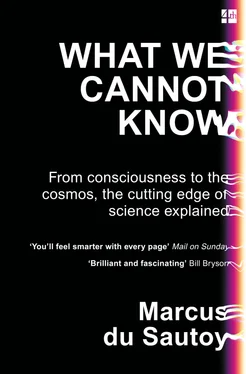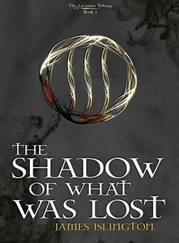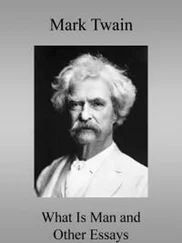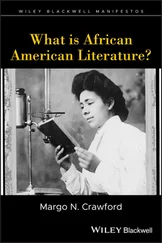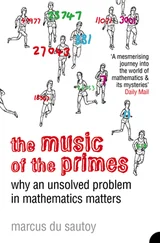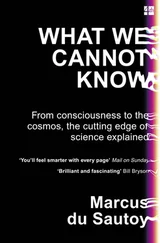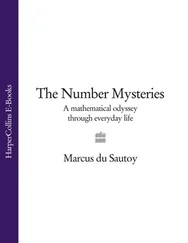1 ...6 7 8 10 11 12 ...25 Newton looked back at this time as one of the most productive of his life, calling it his annus mirabilis . ‘I was in the prime of my age for invention and minded Mathematicks and Philosophy more than at any time since.’
Everything around us is in a state of flux, so it was no wonder that this mathematics would be so influential. But for Newton the calculus was a personal tool that helped him reach the scientific conclusions that he documents in the Principia , the great treatise published in 1687 that describes his ideas on gravity and the laws of motion.
Writing in the third person, he explains that his calculus was key to the scientific discoveries contained inside: ‘By the help of this new Analysis Mr Newton found out most of the propositions in the Principia .’ But no account of the ‘new analysis’ is published. Instead, he privately circulated the ideas among friends, but they were not ideas that he felt any urge to publish for others to appreciate.
Fortunately this language is now widely available and it is one that I spent years learning as a mathematical apprentice. But in order to attempt to know my dice I am going to need to mix Newton’s mathematical breakthrough with his great contribution to physics: the famous laws of motion with which he opens his Principia .
Newton explains in the Principia three simple laws from which so much of the dynamics of the universe evolve.
Newton’s First Law of Motion: A body will continue in a state of rest or uniform motion in a straight line unless it is compelled to change that state by forces acting on it.
This was not so obvious to the likes of Aristotle. If you roll a ball along a flat surface it comes to rest. It looks like you need a force to keep it moving. There is, however, a hidden force that is changing the speed: friction. If I throw my dice in outer space away from any gravitational fields then the dice will indeed just carry on flying in a straight line at constant speed.
In order to change an object’s speed or direction you needed a force. Newton’s second law explained how that force would change the motion, and it entailed the new tool he’d developed to articulate change. The calculus has already allowed me to articulate what speed my dice is going at as it accelerates down towards the table. The rate of change of that speed is got by applying calculus again. The second law of Newton says that there is a direct relationship between the force being applied and the rate of change of the speed.
Newton’s Second Law of Motion: The rate of change of motion, or acceleration, is proportional to the force that is acting on it and inversely proportional to its mass.
To understand the motion of bodies like my cascading dice I need to understand the possible forces acting on them. Newton’s universal law of gravitation identified one of the principal forces that had an effect on, say, his apple falling or the planets moving through the solar system. The law states that the force acting on a body of mass m 1by another body of mass m 2which is a distance of r away is equal to

where G is an empirical physical constant that controls how strong gravity is in our universe.
With these laws I can now describe the trajectory of a ball flying through the air, or a planet through the solar system, or my dice falling from my hand. But the next problem occurs when the dice hits the table. What happens then? Newton has a third law which provides a clue:
Newton’s Third Law of Motion: When one body exerts a force on a second body, the second body simultaneously exerts a force equal in magnitude and opposite in direction to that of the first body.
Newton himself used these laws to deduce an extraordinary string of results about the solar system. As he wrote: ‘I now demonstrate the system of the World.’ To apply his ideas to the trajectory of the planets he began by reducing each planet to a point located at the centre of mass and assumed that all the planet’s mass was concentrated at this point. Then by applying his laws of motion and his new mathematics he successfully deduced Kepler’s laws of planetary motion.
He was also able to calculate the relative masses for the large planets, the Earth and the Sun. He explained a number of the curious irregularities in the motion of the Moon due to the pull of the Sun. He also deduced that the Earth isn’t a perfect sphere but should be squashed between the poles due to the Earth’s rotation causing a centrifugal force. The French thought the opposite would happen: that the Earth should be pointy in the direction of the poles. An expedition set out in 1733 which proved Newton – and the power of mathematics – correct.
NEWTON’S THEORY OF EVERYTHING
It was an extraordinary feat. The three laws were the seeds from which all motion of particles in the universe could potentially be deduced. It deserved to be called a Theory of Everything. I say ‘seeds’ because it required other scientists to grow these seeds and apply them to more complex settings than Newton’s solar system made up of point particles of mass. For example, in their original form the laws are not suited to describing the motion of less rigid bodies or bodies that deform. It was the great eighteenth-century Swiss mathematician Leonhard Euler who would provide equations that generalized Newton’s laws. Euler’s equations could be applied more generally to something like a vibrating string or a swinging pendulum.
More and more equations appeared that controlled various natural phenomena. Euler produced equations for non-viscous fluids. At the beginning of the nineteenth century French mathematician Joseph Fourier found equations to describe heat flow. Fellow compatriots Pierre-Simon Laplace and Siméon-Denis Poisson took Newton’s equations to produce more generalized equations for gravitation, which were then seen to control other phenomena like hydrodynamics and electrostatics. The behaviours of viscous fluids were described by the Navier–Stokes equations, and electromagnetism by Maxwell’s equations.
With the discovery of the calculus and the laws of motion, it seemed that Newton had turned the universe into a deterministic clockwork machine controlled by mathematical equations. Scientists believed they had indeed discovered the Theory of Everything. In his Philosophical Essay on Probabilities published in 1812, the mathematician Pierre-Simon Laplace summed up most scientists’ belief in the extraordinary power of mathematics to tell you everything about the physical universe.
We may regard the present state of the universe as the effect of its past and the cause of its future. An intellect which at a certain moment would know all forces that set nature in motion, and all positions of all items of which nature is composed, if this intellect were also vast enough to submit these data to analysis, it would embrace in a single formula the movements of the greatest bodies of the universe and those of the tiniest atom; for such an intellect nothing would be uncertain and the future just like the past would be present before its eyes.
This view that, in theory, the universe was knowable, both past and present, became dominant among scientists in the centuries following Newton’s great opus. It seemed as if any idea of God acting in the world had been completely removed. A God might be responsible for getting things up and running, but from that point on the equations of mathematics and physics took over.
Читать дальше
